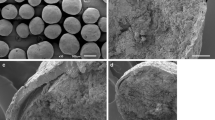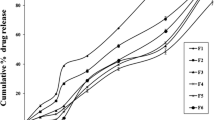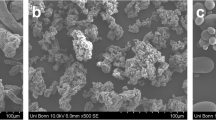Abstract
Purpose. This study examined the effects of mechanical destructive forces on drug release from controlled release (CR) multiple unit dosage forms in vitro and in vivo and their colonic release, using two CR granules of acetaminophen, AG and BG, which differed in hardness (AG was hard and BG was soft), but which did not depend on agitation speed or pH for their release.
Methods. In vitro release rates were determined using several official methods and the rotating dialysis cell method. Granules were administered to healthy volunteers under fasting and fed conditions.
Results. Both granules showed similar release rates under mild destructive conditions in official dissolution tests, but BG showed a faster release rate in the rotating dialysis cell method. In the fasting state, the drug absorption-time profiles of AG and BG were almost equal. In the fed state, the drug release rate of BG increases whereas that of AG is almost equal to the fasted state. The food effect on BG could be caused by an increase in the mechanical stress of the GI tract due to food intake judging from the findings in vitro and in dogs. The colonic release from multiple unit CR products was larger than that from single unit ones.
Conclusions. In vivo release of drug from a multiple unit CR product that is structurally weak is affected by mechanical stresses, which differ among human subjects but are increased by food ingestion. Colonic release from multiple unit CR products is larger than that from single unit products.
Similar content being viewed by others
REFERENCES
N. Katori, N. Aoyagi, and T. Terao, Pharm. Res. 12:237–243 (1995).
M. Shameem, N. Katori, N. Aoyagi, S. Kojima, Pharm. Res. 12:1049–1054 (1995).
G. M. Clark, J. M. Newton, M. B. Short, Int. J. Pharm. 114:1–11 (1995).
T. Mizumoto, K. Sako, M. Fukui, The 112th Annual Meeting of Pharmaceutical Society of Japan, Fukuoka, March 1992
R. Dietrich, R. Brausse, G. Benedikt, V. W. Steinijans, Arzneim.-Forsch. 38:1229–1237 (1988).
S. K. E-Arini, G. K. Shiu, and J. P. Skelly, Pharm. Res. 7:1134–1140 (1990).
D. Verotta. J. Pharmacokinet. Biopharm. 17:269–289 (1989).
K. Yamaoka, T. Tanigawara, T. Nakagawa, T. Uno, J. Pharmacobio-Dyn. 4:879–885 (1981).
J. B. Dressman, Pharm. Res. 3:123–131 (1986).
Author information
Authors and Affiliations
Rights and permissions
About this article
Cite this article
Katori, N., Ma, WS., Aoyagi, N. et al. Effect of Destruction Force on Drug Release from Multiple Unit Controlled Release Dosage Forms in Humans. Pharm Res 13, 1541–1546 (1996). https://doi.org/10.1023/A:1016087814824
Issue Date:
DOI: https://doi.org/10.1023/A:1016087814824




